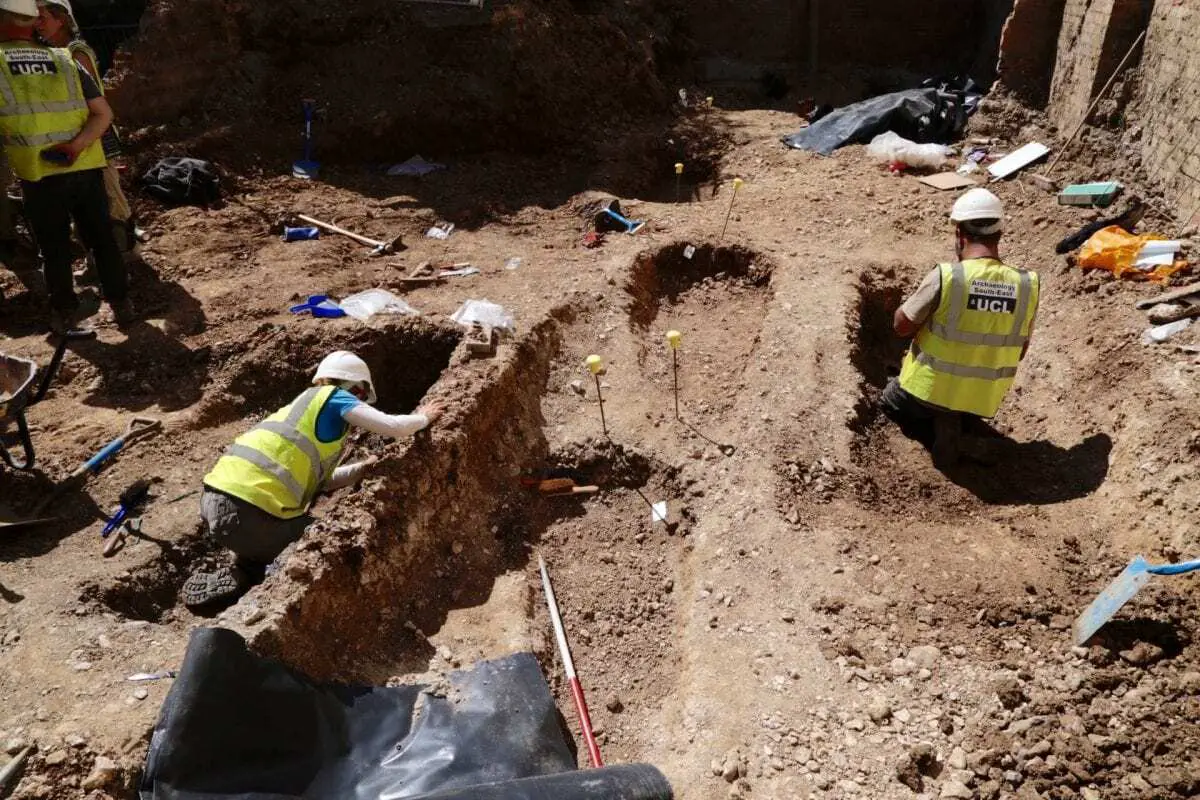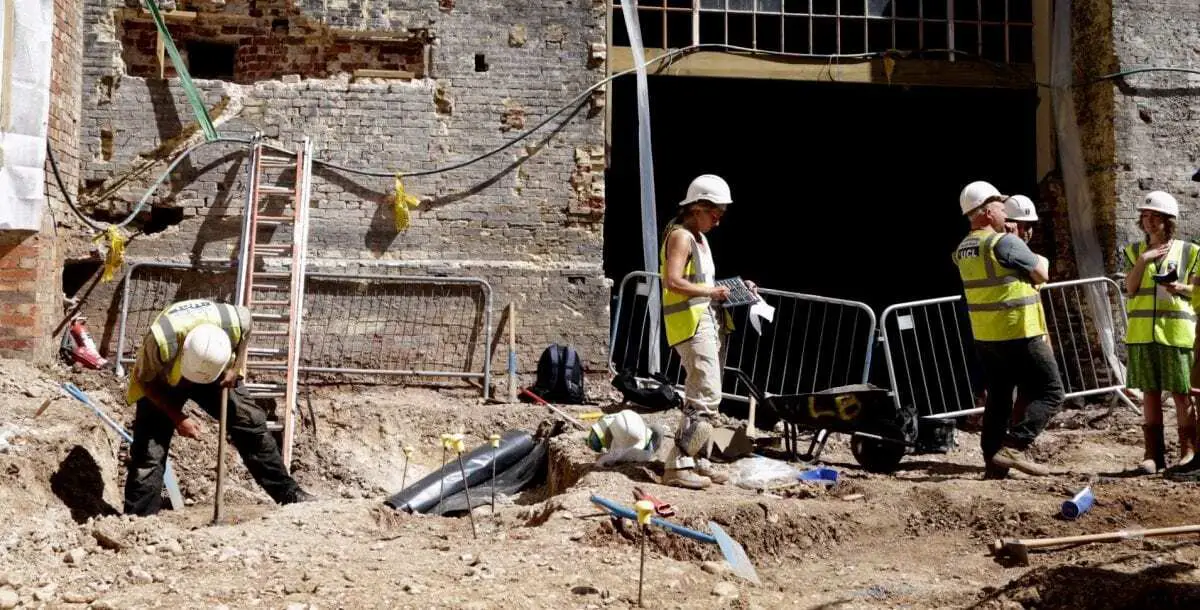A 200-year-old burial site has been discovered during redevelopment work at Brighton Dome Corn Exchange.
Skeletons have been uncovered on-site and are in the process of being exhumed from underneath the area that was formerly the venue’s mini conference room.
The remains are thought to be from ‘Quakers Croft’ a Quaker burial ground that existed before the Royal Pavilion Estate was built.
Alan Robins, chair of Brighton & Hove City Council’s Tourism, Development and Culture committee said:
“We understand that up to nine graves have been uncovered during the excavations. The remains are now being carefully exhumed and will be examined to determine more about the deceased before being re-buried or cremated.
“The find isn’t totally unexpected as the Royal Pavilion Estate site has so many strong historic links but this is a significant find for the archaeologists and another important addition to the city’s rich cultural story.”

Darryl Palmer of Archaeology South-East who is managing the dig on site, says:
“This is a significant find that shines a light on an important historical moment in the city. The Quaker meeting house and cemetery at the Dome is recorded on the Bishop’s map of 1803 and absent by the OS town plan of 1876. The best clue as to when worship and burial ceased is when the Quaker meeting house moved to the current location on Meeting House Lane in 1805.”
A spokesperson for Brighton Quakers said: “We are excited at the news of this discovery. We have known for a long time about the burial ground being used from 1700 to 1805 but did not know that any Quakers were left buried there. We are fascinated to hear of this link with our past and look forward to learning more.”
The work at the historic Corn Exchange is part of an ambitious project to restore and reunite the Royal Pavilion Estate buildings and gardens. The work began in March this year, 2017, and is expected to continue to timetable for completion by late 2018.







